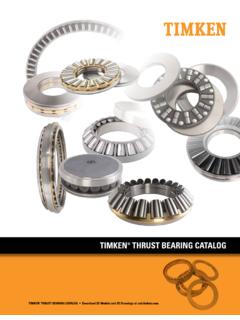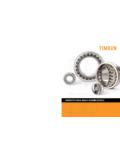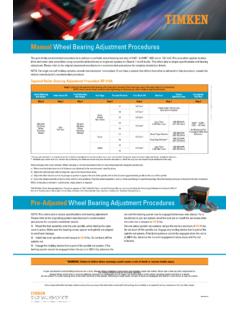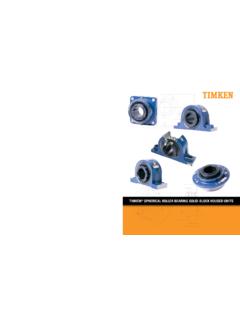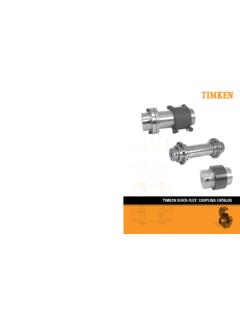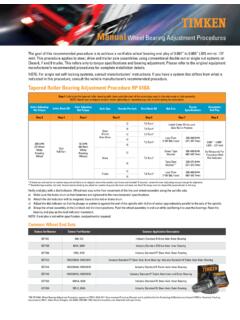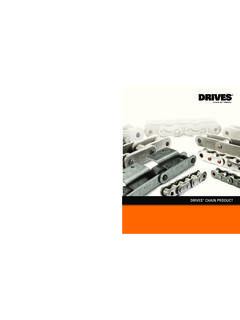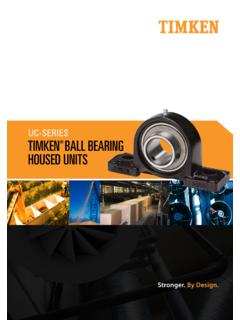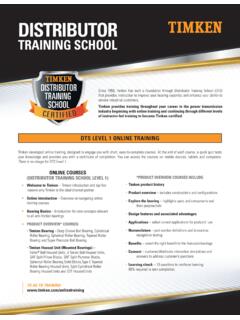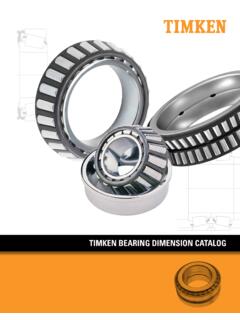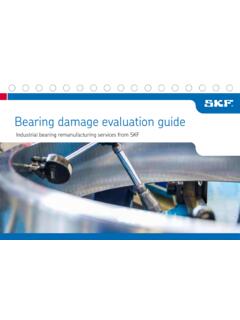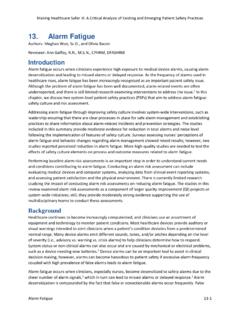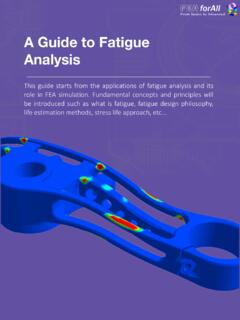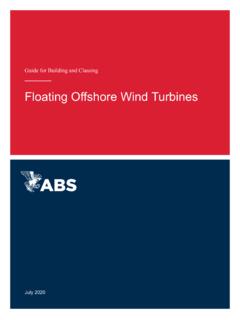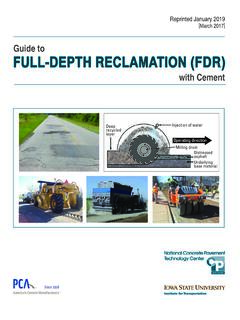Transcription of Timken Bearing Damage Analysis with Lubrication Reference ...
1 Timken Bearing Damage Analysis with Lubrication Reference Guide 2 Timken Bearing Damage Analysis WITH Lubrication Reference GUIDE 2015 The Timken Company NOTE. WARNING Do not use excessive force when mounting or Failure to observe the following warnings could dismounting the unit. create a risk of death or serious injury. Follow all tolerance, fit, and torque recommendations. Always follow the Original Equipment Manufacturer's Proper maintenance and handling procedures are critical. Always follow installation and maintenance guidelines. installation instructions and maintain proper Lubrication . Ensure proper alignment. Never spin a Bearing with compressed air. The rollers may be forcefully expelled. Never weld housed units. Overheated bearings can ignite explosive atmospheres. Special care must Do not heat components with an open flame. be taken to properly select, install, maintain, and lubricate bearings that are used in or near atmospheres that may contain explosive levels of combustible Do not operate at Bearing temperatures gases or accumulations of dust such as from grain, coal, or other combustible above 121 C (250 F).
2 Materials. Consult your equipment designer or supplier for installation and maintenance instructions. If hammer and bar are used for installation or removal of a part, use a mild steel bar ( , 1010 or 1020 grade). Mild steel bars are less likely to cause release of DISCLAIMER. high-speed fragments from the hammer, bar or the part being removed. This catalog is provided solely to give you Analysis tools and data to assist you in your product selection. Product performance is affected by many factors WARNING beyond the control of Timken . Therefore, you must Failure to observe the following warnings could validate the suitability and feasibility of all product create a risk of serious injury. selections for your applications. Timken products are sold subject to Timken terms Tensile stresses can be very high in tightly fitted Bearing components. and conditions of sale, which include our limited Attempting to remove such components by cutting the cone (inner race) may warranty and remedy.
3 You can find these at result in a sudden shattering of the component causing fragments of metal to be forcefully expelled. Always use properly guarded presses of Bearing pullers to remove bearings from shafts, and always use suitable personal protective Please consult with your Timken engineer for equipment, including safety glasses. more information and assistance. Every reasonable effort has been made to ensure the accuracy of the information in this writing, but CAUTION no liability is accepted for errors, omissions or for Failure to follow these cautions may result in property Damage . any other reason. Do not use damaged bearings. Do not use damaged housed units. Warnings for this product line are in this catalog and posted on 2015 The Timken Company Timken Bearing Damage Analysis WITH Lubrication Reference GUIDE 3. Let's face it bearings work in a tough world. Excessive contamination.
4 Poor Lubrication . High heats. Heavy vibrations. These merely scratch the surface of all the wear and tear your bearings go through on a given day. That's where the knowledge and precision of Timken come into play. Our sales and service engineering teams solve problems and offer solutions for customers in virtually every industry. Couple this experience with a long-standing history in material science and tribology, and you gain a team of experts uniquely qualified to help you analyze Bearing Damage . And we want to share this knowledge with you. We developed this Reference guide to help you identify some of the most common types of Bearing Damage , explaining the possible causes and discussing the necessary actions needed to avoid them. We also include useful Bearing references and Lubrication guidelines you can follow. If your Bearing Damage goes beyond what we cover, or if you just need help getting started, call us.
5 Our service engineers can work with you often on-site . to get to the root cause of your problems. We even offer in-depth training that's customized to your specific industry or application. It's a tough world out there. Let us help you make your business roll forward more smoothly. 4 Timken Bearing Damage Analysis WITH Lubrication Reference GUIDE 2015 The Timken Company Table of Contents Preparation and Approach to Bearing Damage Analysis .. 6. Types of Bearing Damage Wear Abrasive Contamination .. 7. Wear Pitting and Bruising .. 8. Wear Grooving .. 8. Etching Corrosion .. 9. Inadequate Lubrication .. 10. fatigue Spalling .. 12. Excessive Preload or Overload .. 13. Excessive Endplay .. 14. Misalignment and Inaccurate Seat and Shoulder Machining .. 14. Handling and Installation Damage .. 15. Damaged Bearing Cages or Retainers .. 16. High Spots and Fitting Practices.
6 17. Improper Fit in Housings or Shafts .. 18. Brinell and Impact Damage .. 19. False Brinelling .. 20. Burns from Electric Current .. 21. Cam Fracture .. 21. Understanding Bearing Life Bearing Service Life .. 22. Lubrication Reference Guide Factors that Impact Lubrication Performance .. 23. Lubrication Guidelines Required Grease Quantity .. 26. Glossary .. 27. Types of Bearings and Nomenclature .. 29. Tapered Roller Bearing Speed Capability Guidelines .. 30. Temperature Guidelines for Roller Bearing Installation .. 31. Cone Bore Growth Expansion Rates .. 32. Reference the Timken Industrial Bearing Maintenance Manual (Order No. 10213) for additional information. Conversion Equivalents for and Metric Measurements .. 33. Conversion Chart Showing Millimeter, Fractional and Decimal Inch Sizes .. 34. Temperature Conversion Table .. 35. Timken Bearing Solutions .. 36. Timken Product and Service Solutions.
7 38. 2015 The Timken Company Timken Bearing Damage Analysis WITH Lubrication Reference GUIDE 5. Preparation and Approach to Bearing Damage Analysis Bearing Damage : Overview of the Facts Timken analyzes bearings from operations across the world. Our Bearing If you're concerned that your Bearing is service and repair specialists find that fully 50 percent of the bearings deteriorating, look for the following signs: submitted to us haven't reached their calculated lives. Vibrations whether felt by hand or measured In some cases, the cause is contact fatigue (inclusion origin, point with a frequency analyzer. surface origin, geometric stress concentration and micro-spalling). In 90 Abnormal noises. percent of the cases, though, the cause is non- fatigue factors, including: Displacement of rotational centerline. Foreign materials. Running temperature increase. Corrosion. Odd smells.
8 Inadequate Lubrication . Lubricant deterioration. Improper handling. Lubricant leakage. Bad running conditions. Visual discovery during routine maintenance check. Suggested Procedure for Bearing Analysis Follow the steps below for an accurate and complete Analysis when investigating any Bearing Damage or system breakdowns. If you need help, contact one of our sales or service engineers. 1. Gather operating data from Bearing monitoring devices; analyze service 8. Mark and record the mounted position of the and maintenance records and charts; and secure application diagrams, bearings and components prior to removal. graphics or engineering drawings. 9. Measure and verify shaft and housing size, 2. Prepare an inspection sheet to capture all your observations. Take roundness and taper using certified gauges. photographs throughout the procedure to help document or describe the damaged components.
9 10. Following removal, but before cleaning, record observations of lubricant distribution and 3. Extract any used lubricant samples from bearings, housing and seal condition. areas to determine lubricant conditions. Package it separately and label it properly. 11. Clean parts and record the manufacturers'. information from markings on the Bearing rings 4. Secure a sample of new, unused lubricant. Record any specification or (part number, serial number, batch information from the container. Obtain the technical specifications date code). and any related material safety data (handling, disposal, toxicological). documentation to accompany lubricant shipments. 12. Analyze the condition of the internal rolling contact surfaces, load zones and the 5. Check the Bearing environment for external influences, like other corresponding external surfaces. equipment problems, that preceded or occurred at the same time Bearing Damage was reported.
10 13. Apply preservative oil and repackage the bearings to avoid corrosion. 6. Disassemble the equipment (either partially or completely). Record an assessment of the mounted Bearing condition. 14. Compile a summary report of all data for discussion with Timken sales or service 7. Inspect other machine elements, especially the position and condition of engineers. components adjacent to the Bearing , including locknuts, adapters, seals and seal wear rings. 6 Timken Bearing Damage Analysis WITH Lubrication Reference GUIDE 2015 The Timken Company Types of Bearing Damage Abrasive Wear Many different operating conditions can cause Bearing Damage . Those listed in this section make up the most commonly identified causes of Damage for Fine foreign material in the Bearing can cause anti-friction bearings, including cylindrical, spherical, tapered and ball designs. excessive abrasive wear.
